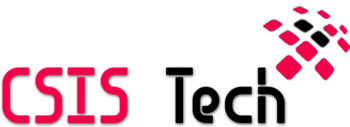Laravel V/s. Symfony: An Unbiased Comparison for 2022 Development!

At the commencement of any new PHP application, one essential decision must be made: which framework should you use? Making a decision can be more difficult than you think due to the abundance of options. If the task at hand isn’t trivial, then starting from scratch isn’t the best option. Because of this, there are numerous options accessible to help. On the other hand, even if you merely scratch the surface, Laravel and Symfony are two of the most popular frameworks available.
In contrast to Laravel, Symfony is an application framework, whereas Laravel is a collection of components that may be used in other applications. In fact, Laravel makes extensive use of Symfony’s components. You can find some of Laravel’s development tools here: https://itcompanies.net/laravel-development-companies to understand how they work. This article compares the Symfony and Laravel frameworks to help you make an informed decision.
Laravel V/S. Symfony – An Unbiased Comparison!
We have already discussed how tough it can be to choose a particular framework when you need to use one. To make it easier, we have compiled a list of attributes of both Laravel and Symfony and compared them for you.
1. Installation Procedure
The Installation procedure for Symfony can be done in two ways. The first one of which is to run the following command: composer create-project Symfony/website-skeleton sfTest. The alternative to this method is to install a binary within your system. The second method is largely recommended by Symfony.
Installing Laravel can be accomplished in a number of methods, the simplest of which is by issuing this command: composer create-project Laravel/LaravellvlTest. Installing a Laravel installer (similar to Symfony) is another approach to get a Laravel project started: composer global require Laravel/installer.
2. Coding style
The process of coding in Symfony is strongly centered on the idea of Dependency Injection, which results in classes that are loosely connected. This simplifies testing and reduces the amount of long-term maintenance required.
By default, Laravel uses Facades and helper methods that are easier to develop, but can be difficult to maintain in the long run.
3. Configuration
Configuration options for Symfony can be convoluted, but they’re well worth it. Settings (YAML, XML/PHP) in bundles control how applications behave in a specific scenario. Access to a database, for example, might be stored in the application’s environment files (.env).
Treating emails differently in the development, testing, and production environments is important. Using PHP >=8, classes and annotations may additionally take care of setting up various options. Most of the time, they are coupled. Typically, this is the case with routes and ORM mapping data. Laravel needs env files in the project root and PHP-based config files for its configuration.
Conclusion!
Laravel was developed with rapid application development (RAD) in mind; therefore, it’s the best framework to utilize if you have a tight deadline and your engineers’ seniority is closer to junior to senior. Symfony’s focus on long-term durability when it was being built benefits corporate situations immensely.








